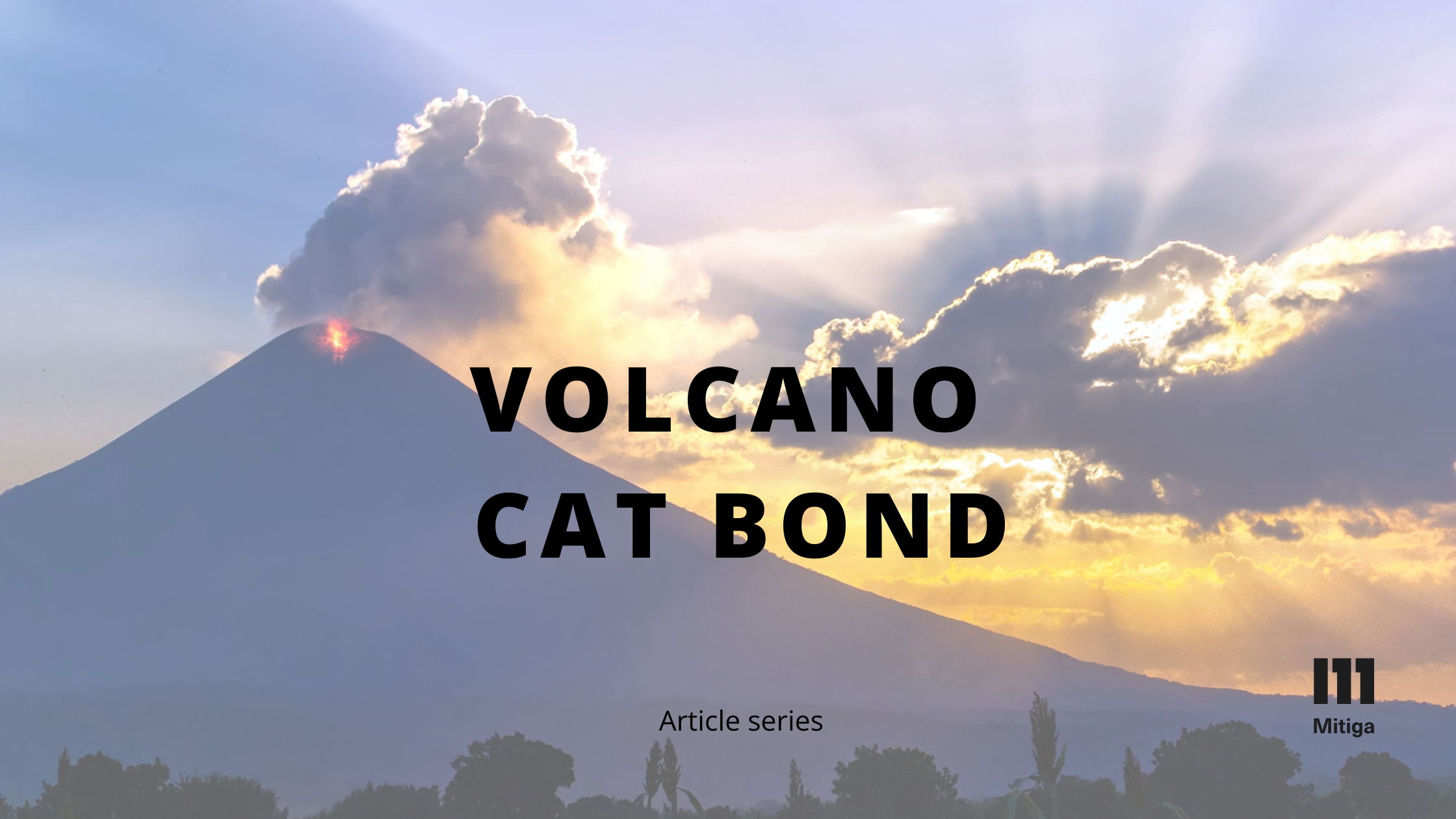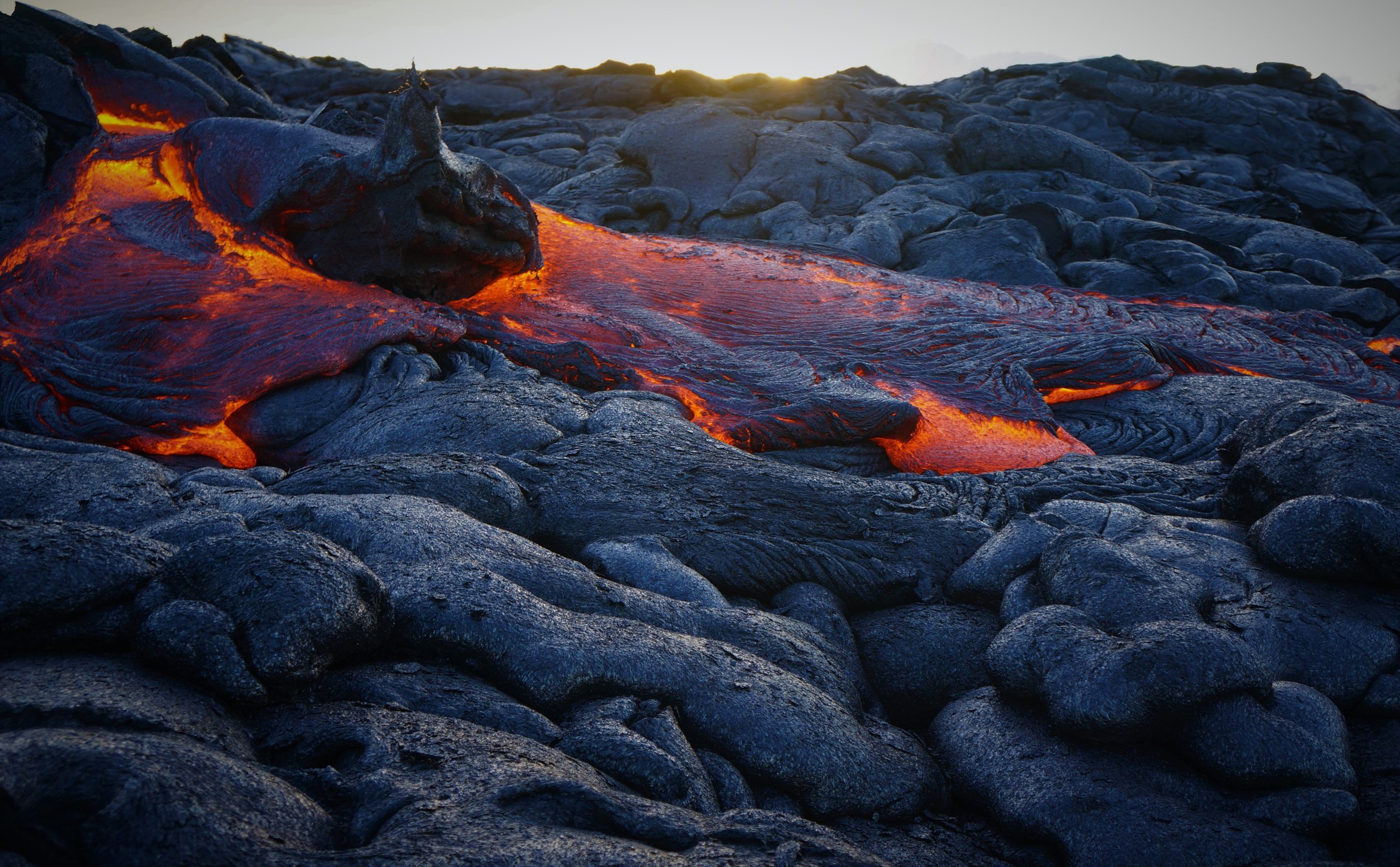Ring of Fire: Assessing Volcanic Risk in Asia- Pacific

Welcome to the fascinating world of volcanoes in the Asia-Pacific region, where Earth's fiery forces intersect with the relentless movements of tectonic plates. In the fourth instalment of our Volcano Cat Bond series, Dr. Karen Strehlow, Volcanologist at Mitiga Solutions, describes the different ways tectonic plates move, the Asia-Pacific region’s worst eruptions, why the risk is so high in the region, and explores the current risks for people and property.
Tectonic Plates: The Drivers of Volcanism on Earth
Volcanism is intrinsically linked to the movement of tectonic plates. The outermost layer of our planet, the lithosphere, is broken into several pieces moving as plates on the asthenosphere below, a region of the upper mantle, that is partly fluid and behaves plastically due to the immense heat and pressure at depth. There are three kinds of plate boundaries: transform, divergent and convergent.
At a transform boundary, the plates are moving side-by-side, which can cause immense earthquakes. The San Andreas Fault in California marks the plate boundary between the Pacific and North American plates and is the reason that seismic risk is particularly high in this state.
More interesting from a volcanological point of view, however, are divergent boundaries, where the plates drift apart. This drifting allows material from Earth’s mantle to ascend; the associated pressure release leads to massive melting that forms mid-ocean ridges, the most magmatically productive regions on this planet. These ridges are large underwater mountain chains resulting from the divergent boundaries between oceanic plates.
Finally, convergent boundaries result from the collision of two plates and can form either enormous mountain chains like the Himalayas or subduction zones.

[ { "type": "highlight", "id": "a126d727-7847-4da4-9800-373ec7b71546", "shape": "underline", "isFront": false, "isAnimationEnabled": false, "animation": "draw", "duration": 0.5, "direction": "right", "color": { "type": "THEME_COLOR" }, "thickness": { "unit": "em", "value": 0.1 }, "linecap": "square"} ]
Subduction is the process of a heavier plate sliding under a lighter one. At depth, the subducting plate releases water, which in turn reduces the melting point of the overlying rocks, resulting in magma ascending and building chains of cone-shaped volcanoes with the most diverse chemistry and eruption mechanisms. The most notorious subduction zone is the “Ring of Fire” surrounding the Pacific Ocean, along which the Pacific Plate is subducted. It is a highly volcanically and seismically active region that encompasses some of the most famous volcanoes. This article will focus on the Asia-Pacific section of the Ring of Fire, i.e., volcanically active countries in East and Southeast Asia and Oceania (Australasia, Melanesia and Polynesia) that border the Pacific.
The Asia-Pacific Region: A Deadly and Costly History of Volcanic Eruptions
With about 400 active volcanoes, half of them having erupted in the last 200 years, the Asia-Pacific countries on the “Ring of Fire” are subject to one of the highest volcanic threats on this planet (1). Many of the most deadly volcanic eruptions in history have occurred there; Indonesia, the Philippines, Melanesia and Japan are at the top of the list in global rankings of volcanic fatalities, displaced people or volcanic threat (2,3,4). Indonesia is considered to have the greatest eruption hazard in the Asia-Pacific region, and its Tambora (1815) and Krakatau (1883) eruptions alone make up 35% of global volcanic fatalities between 1600 and 2010 with about 100,000 victims (3). The 2010 Merapi eruption led to the evacuation of 400,000 people, causing 386 fatalities and an estimated loss of USD 300 million (4). One of the largest historic volcanic eruptions occurred in the Philippines at Pinatubo volcano in 1991, causing an estimated USD 750 million in losses (2).

Why Is Volcanic Risk So High in Asia-Pacific Countries?
The high volcanic risk in the Asia-Pacific region is due to both very active volcanoes and significant exposure. Hundreds of thousands of km2 of urban areas in Asia-Pacific countries lie within 1,000 km of active volcanoes, putting their inhabitants at great risk. For example, the 460,000 inhabitants of Yogyakarta, Indonesia, live less than 50 km from Merapi, and 54 volcanoes are located within a 1,000-km radius around Tokyo. In Indonesia and the Philippines, an average of two million people live within 50 km of a potentially active volcano (6). Auckland, home to about one third of the population of New Zealand, is another prime example of high volcanic exposure. The city is built on the Auckland volcanic field: an area comprising more than 50 eruptive centres, with the most recent eruption occurring only 550 years ago (1).
Most of these vents are monogenetic, meaning that each eruption forms a new vent, so it is not known where the Earth will open in the future. While 550 years may seem a long period of time for non-geologists, it represents a mere moment for a volcano, and there is a very real probability that a new vent will open in the middle of this vibrant city.

Countries without volcanoes also face significant ashfall risk from neighbouring countries, and eruptions in the Asia-Pacific region can have global effects. For example, the 1815 Tambora eruption caused a cooling of the whole Northern Hemisphere, leading to famines in Europe in “the year without a summer”. The largest known eruption on Earth, a so-called super eruption, occurred 75,000 years ago at Toba volcano (Indonesia), which had a global climate impact and would have catastrophic consequences in the modern world (4).
Volcano-Linked Hazards
Volcanic eruptions induce a variety of hazards, from pyroclastic flows (lethal mixtures of hot gas, ash and rocks) and lahars (volcanic mudflows) to lava flows and widespread ashfall. All these hazards can be encountered in the Asia-Pacific region. The Merapi and Unzen volcanoes are renowned for their pyroclastic flows and the word “lahar” comes from the Indonesian language. Fallout of volcanic ash, however, has the widest spatial range and can have regional to global effects. Just one millimetre of ashfall can lead to disruptions to electrical power systems, water supply networks, road, rail and air transport, as well as respiratory problems. For Indonesia, Japan, the Philippines, Papua New Guinea and New Zealand, the average recurrence interval for ashfall >1 mm has been modelled to between 30 and 160 years (5). Ashfall in these modelled scenarios can easily affect millions of people living in the densely populated urban areas in the Asia-Pacific region.
Many volcanoes in the Asia-Pacific region can be found in an ocean setting. Small islands in the ocean formed by volcanic activity showcase the dangerous interplay between eruptions and a coastline, while submarine volcanoes represent the still comparatively unknown threat of submarine eruptions. These can also produce widespread ashfall, as well as tsunami waves. The largely submarine Tonga-Kermadec Arc comprises many potentially explosive volcanoes that could affect the whole Pacific region, as demonstrated by the eruption of Hunga Tonga-Hunga Ha’pai mid-January 2022.
The powerful explosions generated ash plumes up to about 55 km altitude, an unprecedented value in the satellite era, and a massive shock wave that circled the globe several times (7,9). The combination of heavy ashfall and several tsunami waves that travelled across the Pacific led to significant damage to Tonga, in particular, where entire villages were destroyed, communication channels cut off for weeks and many people injured or killed (7). The total loss in Tonga was initially estimated at USD 90 million by the World Bank (8). But the waves also led to disruptions and damage to Japan, and even more than 10,000 km away, also killing two people in Peru (7).


Figure 4
House covered by a pyroclastic flow deposit from Unzen volcano, Japan. Source: Karen Strehlow


Figure 5
Remnants of a village on the flanks of Merapi, destroyed by pyroclastic flows. Source: Karen Strehlow


Outlook
Natural disasters are particularly damaging to developing countries, as they significantly reduce the effectiveness of development efforts, and humanitarian aid is generally required in the aftermath of a volcanic eruption. Several countries in the Asia-Pacific region are still in a developing situation. Volcanic disasters affecting >100,000 people can be expected about once every decade in Indonesia, and once every few decades in the Philippines (6). While the absolute number of affected people is smaller for the island nations of Vanuatu and Tonga, volcanic eruptions here are more likely to affect a larger proportion of the population (>1% affected once every few decades), which can make the society even more vulnerable (6). Even developed nations like Japan and New Zealand are threatened by significant economic and societal disruption, due to the massive insurance gap for volcanic disruptions.
Some Asia-Pacific volcanoes like Merapi erupt frequently, but an eruption of a long-dormant volcano might pose an even bigger threat, because the affected communities are unprepared. One solution for better preparedness and financial resilience with regards to natural disasters lies in parametric insurance products like catastrophe bonds (cat bonds).
Oramas-Dorta et al. (2021) (10) have presented a hypothetical methodology for parametric risk transfer for ashfall-related damages, and Mitiga Solutions has applied a similar methodology to bring the world’s first volcano cat bond to market in 2021, together with our partners at Replexus, Howden Capital Markets and the Danish Red Cross (11). Mitiga’s volcano team is continuously working on developing new volcanic risk transfer solutions, both for specific markets such as the aviation sector and additional volcanic hazards such as lava flows.
References:
- Global Volcanism Program, 2013. Volcanoes of the World, v. 4.11.0 (08 Jun 2022). Venzke, E (ed.). Smithsonian Institution. Downloaded 29 Jun 2022. https://doi.org/10.5479/si.GVP.VOTW4-2013.
- Annen and Wagner (2003) The Impact of Volcanic Eruptions During the 1990s. Nat Hazards Rev, 4:169-175.
- Auker et al. (2013) A statistical analysis of the global historical volcanic fatalities record. Journal of Applied Volcanology, 2:2.
- Brown et al. (2015) Global volcanic hazard and risk. In: Loughlin et al. (eds), Global Volcanic Hazards and Risk, pp. 81-172. Cambridge University Press.
- Jenkins et al. (2012) Regional ash fall hazard II: Asia-Pacific modelling results and implications. Bull Volcanol, 74:1713-1727.
- Simpson et al. (2011) Volcanic threat in developing countries of the Asia-Pacific region: probabilistic hazard assessment, population risk, and information gaps. Nat Hazards, 57:151-165.
- Global Volcanism Program, 2022. Report on Hunga Tonga-Hunga Ha'apai (Tonga) (Bennis, K.L., and Venzke, E., eds.). Bulletin of the Global Volcanism Network, 47:3. Smithsonian Institution. https://doi.org/10.5479/si.GVP.BGVN202203-243040
- https://thediplomat.com/2022/02/assessing-the-aftermath-of-tongas-volcanic-eruption-and-tsunami/#:~:text=The%20volcanic%20eruption%20and%20subsequent%20tsunami%20that%20hit,to%20the%20first%20impact%20report%20since%20the%20disaster.
- Carr et al. (2022) Stereo Plume Height and Motion Retrievals for the Record-Setting Hunga Tonga-Hunga Ha’apai Eruption of 15 January 2022. Geophysical Research Letters, 49(9):e2022GL098131. https://doi.org/10.1029/2022GL098131
- Oramas-Dorta et al. (2021) Design of parametric risk transfer solutions for volcanic eruptions: an application to Japanese volcanoes. Natural Hazards and Earth System Sciences, 21:99-113. https://doi.org/10.5194/nhess-21-99-2021
- https://www.artemis.bm/news/first-volcanic-eruption-cat-bond-issued-for-the-danish-red-cross/
Other articles in Mitiga's Volcano Cat Bond series


Breaking Down the Multiple Hazards of Volcanic Eruptions
In this article, we provide a brief overview of the multiple and unique hazards associated with volcanic eruptions.


Italian volcanoes and the difference between hazard and risk
We provide a detailed look at Italy’s volcanic inventory, working our way from South to North along its most famous volcanoes.


Welcome to the Volcano Catbond Series
With volcanic eruptions causing billions of dollars in economic losses, it is important to take action to understand and prepare for potential risks. We dive into the first article of the Volcano Cat Bond series.



